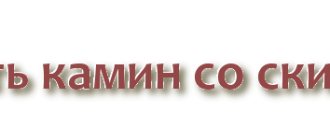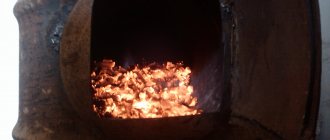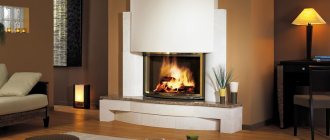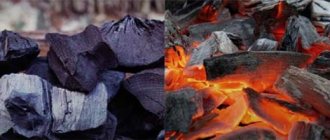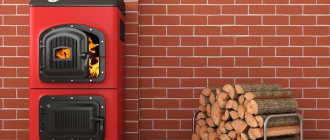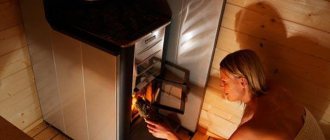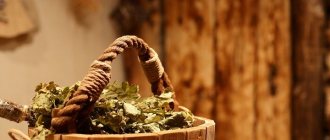The presence of an open hearth in the form of a fireplace in a modern home has become a rarity today. There is no longer any need to stock up on firewood and be able to predict the behavior of the flame, depending on the direction and strength of the wind. To create comfort, just turn the knob on the heating boiler or set the desired temperature on the convector via your smartphone. But with these technical innovations, the enchanting sounds of burning logs, the soft warmth of coals and the light smell of fresh pine firewood filling the room are becoming a thing of the past. After all, for those lucky people in the house who have a fireplace, the ritual of lighting a fire itself has a special meaning and content. True, if the fireplace ignites quickly and does not fill the room with thick smoke. After all, not all fireplace owners know how to light a fireplace like a professional. Although they don’t learn this the first time. At the same time, there is nothing supernatural here, everything is simply learned in practice.
What does a properly lit fireplace mean?
What does a properly lit fireplace mean? How to determine that the fire in the hearth is burning correctly? How do professionals light a fireplace? These questions are best answered by experienced fireplace owners. They can not only tell you, but also share practical advice on how to avoid failures when lighting a fireplace. First of all, professionals will say that the criterion for correct actions to prepare the firebox will be the smell. The smell that lingers in the room. Until the moment of kindling, during the combustion of fuel and after the end of combustion, no unnecessary odors should be felt in the room. Simply put: there should be no smoke, no burning, no carbon monoxide in the room.
The second point is that with the right approach, literally in 5-7 minutes near the portal you will be able to feel the pleasant warmth from burning wood - the fireplace will be properly heated and will not begin to absorb heat into itself, but actively release it into the space of the room.
The third point is that proper ignition will allow you to admire the high flame for a long time. In this case, the flame will be truly beautiful and light. And the release of visible smoke will be minimal.
It is these signs that, according to professionals, are signs of how to light a fireplace correctly.
What is a fireplace stove?
The appearance of fireplace stoves on the heating appliance market has become a real boon for summer residents and owners of temporary residences. Before that, they had to choose between fast warm-up and high efficiency. An open fireplace, which in a few minutes turns a glacier into a comfortable room for living, is very voracious. Firewood burning requires a lot of attention: if you miss the time of the next bookmark, the fire will go out and the room will cool down as quickly as it warmed up. The efficiency of most modern stoves exceeds 50%, and the intensity of fuel combustion in them is well regulated. But the fast warm-up mode can not be configured on all models.
The fireplace stove is a hybrid heating unit that does not have these disadvantages. The intense combustion of the first bookmark allows you to quickly deliver a large amount of heat into the room. After additional loading, the fireplace stove can be switched to a long-burning mode, maintaining heat release at a level that compensates for heat loss.
The main differences in the design of this unit from a traditional fireplace:
- glass door equipped with a locking mechanism that ensures a tight fit;
- flame breaker - a metal plate that changes the direction of movement of exhaust gases, that is, it organizes smoke circulation.
The main difference from a traditional chimney stove is its lower weight, which does not require installation on a foundation. At the same time, the design of the fireplace stove retains the blower door and smoke channel damper. Many models are equipped with functions for supplying secondary and tertiary air and self-cleaning glass.
What needs to be done to make kindling quick and easy
According to those who use the fireplace infrequently, the biggest problem when starting a fire is the large amount of smoke during kindling.
If no one lived in the house for a long time and the fireplace was simply not used for a long time, then such a scenario is quite likely. When idle for a long time, the atmospheric pressure and temperature inside the house are comparable to the temperature outside. Cold walls do not contribute to the formation of natural air circulation. Therefore, it turns out that before lighting a fireplace, you need to ensure at least minimal movement of air masses. Many professionals advise checking the draft in the chimney before starting the fire. The advice is practical and very correct.
After a long period of inactivity, an air lock usually forms in the chimney. It also does not allow smoke from the firewood to quickly pass into the chimney. This problem can be solved in several ways, one of which can be called classic. You need to crumple the newspaper and roll it into a tube, so that you get something similar to a torch. After setting this improvised torch on fire, we bring it to the fireplace tooth. The flame will allow you to “push” the air in the pipe and the draft will definitely improve. However, this proven method of checking pipe draft will only work when the windows in the room are closed and there are no drafts. A sharp opening of the door while checking the draft with a newspaper can nullify all efforts - the smoke will change direction and fill the entire room.
But what professionals do not recommend is the use of technical innovations.
Do not use a fan to ignite logs. Also, do not use chemical liquids to ignite the flame. The air flow from the fan will not be able to describe a smooth arc of natural draft. At the same time, the flow, bouncing off the back wall of the firebox and grabbing ash from the previous firebox, may well fill the entire room with it. So it’s better to spend 2-3 newspapers and a few minutes of time to achieve the desired result than to ruin the whole day by unscheduled room cleaning.
Preparation
Before dealing with fire, you should prepare the fireplace for use. Even if you heat it daily, still do not neglect this step for your safety.
- It all starts with a chimney inspection. The accumulation of soot on its walls can lead to uncontrolled combustion, that is, to a fire. Soot contains flammable resins and a substance called creosote. They need to be disposed of in a timely manner.
- While the fireplace insert is not filled with wood, you should check the draft. This is easy to do if you set fire to a piece of old newspaper. If there is draft, the fire flame will clearly deviate towards the chimney.
Each owner independently determines what to light the fireplace with, but there are a number of tips that you need to heed. Each of us has wondered why dry wood burns better. Damp firewood contains moisture between the fibers. It is necessary to transfer the amount of heat for a long time so that it completely evaporates, and only then the firewood will ignite.
Dry firewood, ready to use
Therefore, if you have a wood-burning fireplace, you should use only dry logs, preferably hardwood. Of course, you can melt it with wet wood, but it will require a lot of effort from you. A freshly felled tree is suitable for firewood after a year of proper drying, so owners of wood-burning fireplaces have pre-prepared supplies in woodpiles.
There are also certain requirements for the external parameters of firewood. Their length should not exceed 40 cm and be about ¾ of the width of the firebox. As for specific breeds, preference should be given to those that provide more heat. Examples include beech, yew, oak, and birch. It is not recommended to use coniferous trees, as the resin they contain will produce a lot of soot and smoke.
A few words from professionals about logs or why you need to prepare for kindling in advance
In the recommendations of an experienced summer resident on how to light a fireplace, most of the time is devoted to the issue of selecting firewood for kindling. The monologue will mention the types of wood suitable for kindling. A lot will be said about the conditions for storing firewood. And a separate demonstration lesson will be devoted to how to properly chop wood chips for kindling. What can be said about this, all this is correct and true. And it depends on the quality of the firewood how quickly the flame will flare up and what color the room will be filled with.
For a fireplace, especially for the kindling process, firewood is usually prepared in advance. To do this, they are brought into the room for final drying 7-10 days before. Firewood must be hardwood. Since hardwood does not emit resin when burned. This way they don't smoke as much. Coniferous firewood is good for kindling. They split well and from them you can get both small chips for ignition and a small splinter to start burning.
If possible, a firewood shed is built on the site to store firewood. Fresh firewood is absolutely not suitable for kindling, and it is of little use during the heating process. But there will be a lot of smoke and soot from them. So if it is possible to dry the firewood for a year or two, then it is better to do so.
During the ignition process, it is not recommended to use home-made lighter fluids, much less pure gasoline or diesel fuel. As a last resort, you can use dry alcohol. It's much safer than lighter fluid. It does not spread throughout the firebox, its flame has a local effect, and the burning time is longer than the burning time of the liquid. And most importantly, dry alcohol does not flare up, but flares up slowly, which is what is required to gradually light a fire on wood.
Closed option
Thinking about what kind of firewood is best to burn a fireplace with glass covering the firebox, you come to the understanding that the range of suitable options here is much wider. In addition to the types of firewood that we have already considered, you can also use other wood that emits smoke and sparks, because the fire is securely hidden behind a protective screen. The main thing is that the length of firewood for the fireplace allows it to be completely loaded into the firebox and closed.
Closed fireplace in a private house
Warm ash. If we consider dense and strong wood that can burn even in its raw form, then ash has no competition. This firewood is considered the hottest with maximum heat transfer. Ash is an excellent option in cases where it is necessary to heat a room in the shortest possible time or quickly heat a bathhouse. Linden has similar characteristics, but, like ash, it cannot be found in all regions.
Fragrant pine needles. As we said earlier, coniferous wood is not suitable for lighting open fireplaces and stoves, but in a closed version they will be appropriate. Coniferous firewood has good heat transfer, and the combustion period of the wood can be described as normal, and what a pleasant aroma it gives off. It is optimal to use pine for your home; it has greater heat transfer.
Useless poplar. One of the cheapest firewood is poplar wood. The fact is that this firewood burns very quickly and produces very little heat. The relevance of their use in the fireplace is controversial, but in the warm season, if you need a short cozy pastime, such firewood can be thrown into the fireplace.
Alluring fire in the fireplace
When preparing wood for the fireplace, do not forget about the size of the logs. Do not make firewood too thick or thin. The optimal size is considered to be a width of 6-8 centimeters, but you choose the length based on the size of the firebox. The normal length of logs is 2/3 of the firebox width.
Regardless of what kind of wood you use for burning fireplaces and stoves, you should try to dry it as much as possible. In this case, its characteristics will be optimal. For normal drying of the wood, it should be stored in a well-assembled woodshed with a well-thought-out design.
Practical advice and step-by-step instructions on how professionals light a fireplace
Eight necessary actions from professionals.
So, as the professionals light a fireplace, how to do it correctly? The problem is solved in several steps. The first action is to open the forward stroke valve.
The second step is the choice of firewood for ignition and combustion. Dry pine chips are used for ignition. Oak or birch planks are taken for the first combustion, real chopped oak, birch or alder logs are taken for the main firebox.
The third step is to check the fireplace draft. The chimney must be clean from soot and dirt. Using a newspaper, the draft is checked and the air plug is broken through.
The fourth step is to place 3-4 chopped logs on the bottom of the firebox. Smaller firewood is placed perpendicularly in the second tier; there should be 4-5 pieces in a row. The distance to the back wall should be no more than 15-20 cm, but the pyramid of firewood should not touch the wall.
The fifth step requires laying down the kindling paper. The best option for this is a regular newspaper. It should first be crumpled, and then straightened out and placed in the center of the second tier. You can use advertising brochures and fashion magazines for kindling, but this waste paper will burn poorly, there is too much gloss, and such paper will take longer to crumple than a newspaper. In principle, you can use school notebooks, but manuscripts also don’t burn very well, especially on coated paper, so no alternative to newspaper has yet been found.
Step six - here it is still worth resorting to the help of chemistry. After a long period of inactivity of the fireplace, it is recommended to use dry alcohol; usually one tablet is enough to reliably light firewood.
Step seven - a lattice of thin wood chips is laid on top of the paper and alcohol tablets. Thin splinters or chips should be no thicker than 4-5 cm. They should not be packed tightly to allow air access, but they should not be packed too rarely.
Eighth action - it is recommended to close the doors and windows in the room. This is necessary so that there is no backdraft effect.
Finishing touch
And finally, when all the steps are completed, the paper is set on fire with a match. Even if the draft is weak, the flow of air heated by the wood chips rises up the chimney, increasing the draft, and then the firewood ignites on its own. After the top tier burns out, it is recommended to put another 4-5 wood chips into the flame. After this, when the second tier is actively burning, 4-5 medium-sized planks are laid. The next step will be to lay full-fledged logs, but this is done only when the flames engulf the lowest tier of firewood.
How to use a fireplace safely - practical tips for comfort and safety
Dear visitors of the Design Museum, do you know the safety rules for using a fireplace?
On cold days, a fireplace is a hearth that warms the house and provides family comfort. A romantic and relaxing state comes to a person when he watches the fire in the fireplace. However, you should always remember about safety when lighting a fire in the fireplace.
Last year, on New Year's Eve, a tragedy occurred in a neighboring town. The fire destroyed the historic home, killing three young children, two elderly people, and grandparents.
The woman and her husband were the only survivors. According to the woman, the daughter wanted Santa Claus to come to the children and warm up by the fireplace with them, but improper use of the fireplace led to tragedy. The events of this night should be a lesson for everyone who wants to use a fireplace.
It is extremely important that fireplace chimneys are cleaned every 2 years.
Fireplace safety starts with the chimney. The fireplace must be cleaned regularly. The chimney sweep begins the work of cleaning the fireplace by installing a special brush through the chimney.
This is necessary to remove soot, debris and bricks. After this, the damper, smoke chamber, shelf and firebox are cleaned. This entire process can take about an hour.
After this, the chimney sweep should check how well the fireplace has been cleaned by starting a small fire in the fireplace. The check will ensure that the chimney sweep has worked diligently, and in addition, it is necessary to keep a record of the cleaning of the fireplace in a special book.
How to light a fireplace correctly
Never use flammable liquids to light a fireplace. It's safer to use old magazines or newspapers. It is better to use dry firewood, mainly hardwood.
Dry firewood burns well, but damp wood hisses and does not light well. Instead of burning, they smoke and smoke. When soot forms, creosote is released; its substances release a lot of soot, which quickly clogs the chimney and is easily flammable, which can lead to a fire.
Never attempt to burn old boxes or trash in a fireplace. And never leave your burning fireplace unattended. If you are going to go to bed or leave the house, you need to wait until the fire in the fireplace goes out and the ashes cool down. This rule should be followed if you do not want an accident to occur.
The chimney must be left open overnight, since combustion produces carbon monoxide, which is a toxic gas. It is recommended to install carbon monoxide detectors in your home, preferably on each floor and in bedrooms. The batteries in the detector should be checked monthly, and detectors should be replaced once a year.
It is advisable to store firewood for the fireplace in specially designated rooms with a roof (sheds).
If the fireplace is heated with coal, then you should know that coal burns much longer than wood. Therefore, it is necessary to ensure that the fire in the fireplace burns out and is extinguished.
You must use a shovel to dig up the ashes and place them in a special metal container. The container must be stored away from flammable materials and not on a wooden floor.
Many fireplaces have a hatch at the bottom of the back. This is a kind of ash trap. Burnt coals and ashes must be removed.
If you use the fireplace for a month, then you need to clean the firebox (the area where the wood burns) once a week. It is not recommended to completely remove ash from the firebox, as it allows the coals to flare up faster. The fireplace should be cleaned thoroughly after the end of the heating season.
How to light a fire in a fireplace
The fireplace has adjustable dampers that need to be opened. First you need to prepare old sheets of newspaper, roll them into grapefruit-sized balls, or roll them into batons, and place them between the logs. Place the firewood crosswise in the firebox and place rolled up newspapers under it.
The logs must be split. You can use brushwood or straw on top. It should be remembered that the flow of air allows for rapid combustion.
After the small logs have flared up, you can add two small logs, and then larger ones. It is important to monitor the burning of logs in the fireplace to prevent a fire.
Dry brushwood is the first thing that can burn well. Highly flammable materials include twisted newspaper, dry apple tree branches, birch and fluffy pine branches. It is not advisable to use paper with colored ink, as flammable residues may clog the pipe.
It is better to use dry corn cobs, pine cones, and well-dried coniferous tree sticks.
What kind of wood burns better?
Dry wood burns better. Before using firewood, it must be dried. Freshly cut wood is damp and burns unevenly. It also produces a lot of smoke and little heat.
Well-dried firewood, ready for use, has tiny cracks in the split section. The best firewood is from broad-leaved deciduous trees.
Ash, oak, maple, beech, birch. By the way, birch leaves virtually no ash. It is better not to use firewood from coniferous trees; they are only good for firewood, for ignition, since they burn very quickly.
How to keep warm
Even when the fireplace damper is closed, the seal is not always effective. Glass doors on the front of the fireplace can effectively keep air flow into the fireplace.
Burning wood near doors can be safe. When the fire burns out completely, you cannot immediately close the damper, because carbon monoxide will still form for some time. You cannot close the damper until the fire is completely extinguished; the coals must burn out.
Necessary tools and equipment
Before using the fireplace, you must check the availability of the equipment. A durable screen is necessary to keep the coals inside the fireplace and prevent them from flying out into the room.
Fireplace tools are usually sold together. Included: you will see brushes, a poker, a shovel and tongs. We strongly advise you not to skimp here, since your life and health may depend on the quality of the tool.
The fireplace must be strong and durable and not fall apart during use. In particular, it is necessary to check that all handles are securely fastened and that the tools are also safe to use.
A large basket is useful for transporting and storing firewood. The grate in which you place the logs must be spacious and durable so that the firewood and kindling material do not fall out of it.
Warm air rises up the chimney. In order to keep the house warm at night, it is necessary to have a special metal shield, a fire-resistant blanket, or glass doors in the fireplace. The shield can be closed after the fire has completely burned out and the embers have gone out. Then the heat will not escape directly from the fireplace through the chimney.
Interesting facts about fireplace ashes
Ash can absorb pet odor. Ash can be used to clean paving slabs near the house. To do this, you need to sprinkle the tiles with ash, and then wipe with a brush and pour water. Ash can also be a good fertilizer.
If you sprinkle ashes on the soil in the garden, it will release its nutrients, but you should remember that too much ashes can ruin everything.
Ash repels snails and slugs from plants. Sprinkling ashes on your garden beds will protect your plants from pests.
Ash can be used instead of salt on icy front walkways. The ash also strengthens and controls the slowing of algae growth. When using a fireplace, do not forget about safety, and we can only wish you wonderful and warm evenings by the fireplace this winter.
Fireplace cleaning
You should regularly clean the fireplace to remove accumulated soot and soot, and ensure that the ash container is not overloaded. By the way, leave some ash on the grate and in the ash pan, this will allow you to light the fireplace faster and easier. When cleaning cast iron, fire glass, metal, brick, and fireplace surrounds, use appropriate cleaning products designed for their care.
Cleaning of the heating chamber and chimney for preventive purposes should be carried out regularly. At the same time, we always double-check whether the chimney is sealed, what condition the fireplace insert is in, and clean the chimney pipe of combustion products and accumulated soot.
Why does the fireplace fail to melt or smoke after a long period of inactivity?
First, let's look at the reasons why a heating device that has not been used for a long time does not heat well and smokes at the beginning of the season. The fact is that during the winter the chimney of a stove or fireplace becomes very cold and damp. The pipe can freeze so much that the air temperature inside it is lower than outside or in the house. Based on physical laws, cold oxygen in the smoke duct does not rise up the pipe. In other words, there is practically no draft in a cold pipe. To light a stove complete with a frozen chimney, you need to expel the cold air.
How to properly stack firewood in a fireplace
Firewood for the first stack is selected in medium size. Alder, aspen, oak or any other hardwood are suitable. Birch trees will burn worse and produce more soot; it is better to add them when the firebox is already quite well heated. Do not use softwood.
Place two or three larger logs on the bottom, and three layers of finely chopped wood and wood chips on top.
Take this method of laying firewood as a rule.
Each layer should be laid perpendicular to the previous one. Do not place the logs too closely together; leave gaps between them for free air circulation.
Stack several layers of firewood perpendicularly: larger logs on the bottom, smaller logs on top and some chopped wood chips
What kind of wood is best to light a fireplace?
It is better to use hardwood for the fireplace fireplace. Soft tree species smoke, and coniferous trees “shoot sparks.” In addition, the firewood must be dry. If you burn raw ones, this will lead to smoke and contamination of the glass of the heating chamber. Condensation may also form in the chimney pipe and, as a result, the thermal efficiency of the fireplace may decrease. Overdried firewood is also not an ideal option; it burns very quickly and therefore produces minimal heat transfer.
The best firewood is considered to be from the following trees: oak, beech, and birch!!!
Rules for operating the fireplace
— We place several logs at a time, without compacting them, filling approximately a third of the fireplace’s heating chamber with them.
— Long-term operation of a closed fireplace in continuous burning mode is not recommended.
— When loading firewood for the second time, it is recommended to open the damper, and first open the fireplace door a little, and only then open it completely. This method will help to avoid strong emissions of smoke into the room from the fireplace.
— The heating chamber made of cast iron or steel, as well as the fireplace door made of glass, get very hot, so it is necessary to use special tools to open the heating door.
